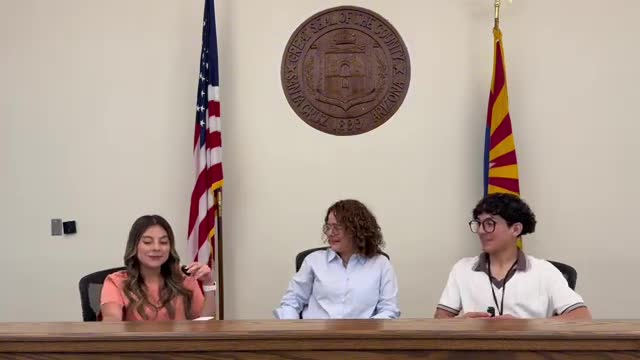Justice of the Peace Explains Role in Santa Cruz County DUI Cases
July 19, 2025 | Santa Cruz County, Arizona
Thanks to Scribe from Workplace AI , all articles about Arizona are free for you to enjoy throughout 2025!

This article was created by AI using a video recording of the meeting. It summarizes the key points discussed, but for full details and context, please refer to the video of the full meeting. Link to Full Meeting
Justice of the Peace courts, as Olaiz explained, serve as the "people's court," handling matters such as traffic violations, evictions, and small claims. These courts are designed to maintain order in the community, addressing everyday legal issues that affect residents directly. In contrast, more serious matters, including criminal cases and family disputes, are reserved for the superior court. This distinction highlights the vital role that Justices of the Peace play in ensuring that minor legal issues are resolved efficiently and fairly.
However, Olaiz candidly shared the challenges she faces in her position. Unlike many judges, Justices of the Peace are not required to have a legal background. This can make navigating the complexities of legal proceedings daunting, especially when engaging with attorneys and interpreting the law. "It's challenging sometimes to just know and stay on track and follow the law," she admitted, reflecting the unique pressures of her role.
One of the critical responsibilities of a Justice of the Peace is overseeing compliance with court orders, particularly in cases involving DUIs. Olaiz described her morning spent reviewing cases to ensure that defendants were adhering to the conditions set by the court, such as attending driving school and completing community service. "The judge is just the referee," she noted, illustrating her role in facilitating justice rather than determining guilt or innocence.
As she reflected on her career, Olaiz acknowledged the significant life changes that have come with her position. While she did not delve into specifics, her commitment to serving her community remains clear. The role of Justice of the Peace is not just a job for her; it is a calling that shapes her daily life and the lives of those she serves.
In a world where legal matters can often feel intimidating, Adriana Olaiz stands as a bridge between the law and the community, ensuring that justice is accessible and understood. Her insights remind us of the human element behind the judicial system, where every case represents a story and every decision impacts lives.
Converted from Adriana Olaiz, Justice of the Peace meeting on July 19, 2025
Link to Full Meeting
Comments
View full meeting
This article is based on a recent meeting—watch the full video and explore the complete transcript for deeper insights into the discussion.
View full meeting